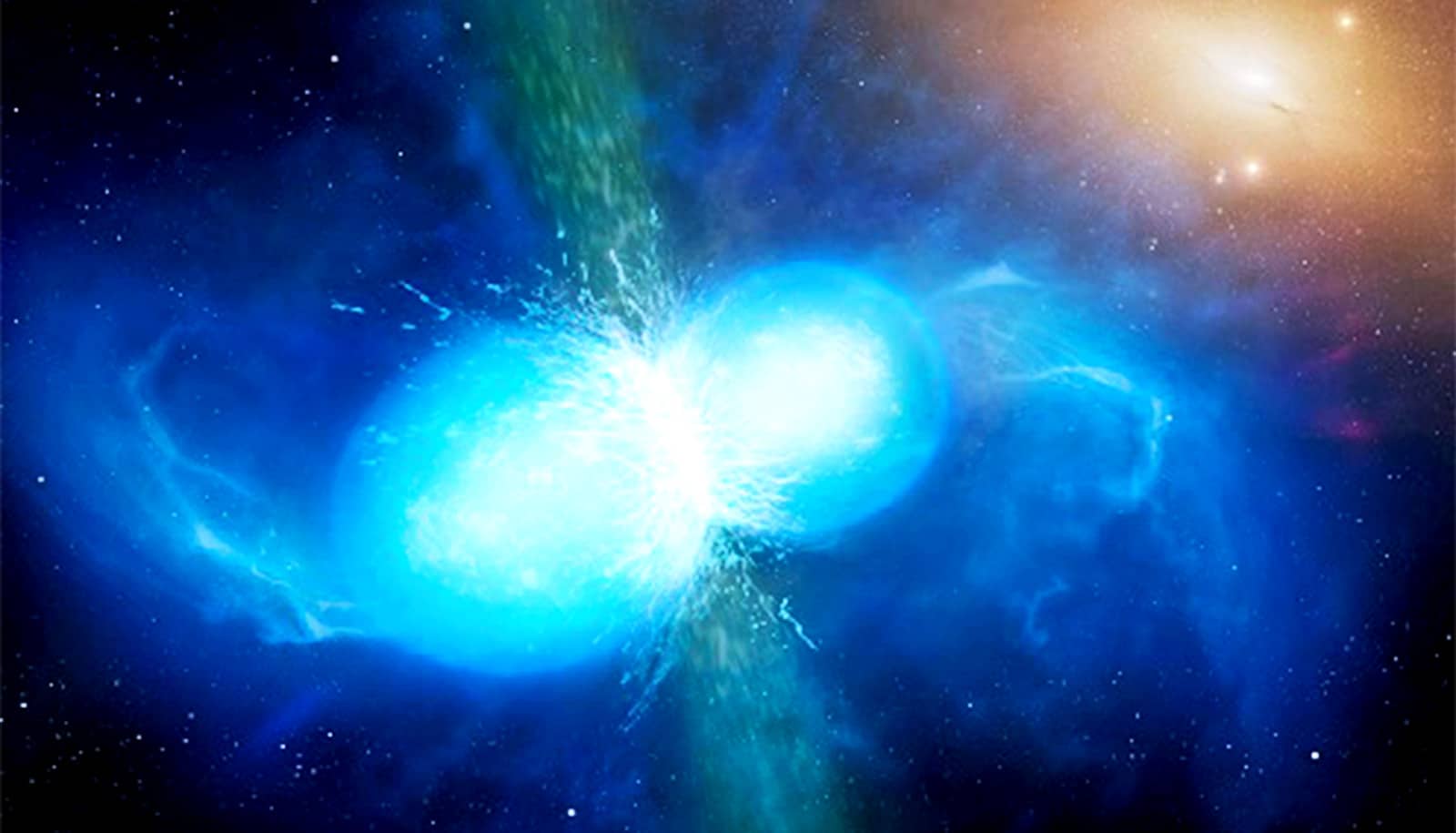
Researchers have found the unequivocal evidence of where the heaviest elements in our universe come from.
For the first time, the researchers have detected an element heavier than iron in the collision of two neutron stars, resolving one of the fundamental questions about the history of the universe.
“You could say that this is the last piece of the puzzle of the formation of the elements.”
Since the 1950s, we have known that hydrogen and helium formed during the Big Bang, and that heavier elements up to iron form via nuclear fusion in stars and when stars explode as supernovae. But iron is only no. 26 out of about 90 naturally occurring elements in the periodic table. Where the other elements heavier than iron came from has long been a mystery.
For some time now scientists have known that some of them form in the envelopes of low-mass stars, so-called AGB stars. But only half of the elements heavier than iron are created this way. So where do the rest come from?

Now, researchers have found spectroscopic evidence that the explosion that happens when two neutron stars collide creates heavy elements. The researchers identified the metal strontium in a spectrum from a neutron star collision observed in 2017.
The origins of elements
“Before this we were unable to identify any specific element created in a neutron star merger. There were strong indications and good circumstantial evidence that heavy elements were created in these events, but the unequivocal evidence was missing until now,” says Darach Watson, an astrophysicist in the Niels Bohr Institute at the University of Copenhagen.
“One of the most fundamental questions about the universe has been: where do the elements of the periodic table come from? You could say that this is the last piece of the puzzle of the formation of the elements.”
The only way to create substances heavier than iron is by a process called neutron capture, where neutrons penetrate an atomic nucleus—for example, an iron atom—which absorbs the neutrons, creating a new, heavier atomic nucleus and thus a new element. Neutron capture can be either fast or slow, in the so-called r-process (rapid) or s-process (slow). About half of the substances neutron capture creates form primarily via the r-process. Elements formed almost exclusively by the r-process are typically very heavy and near the end of the periodic table: gold, platinum, uranium.
The location of this rapid process has never been established. In recent years, the scientific consensus has evolved toward the idea that much of the r-process happens when two neutron stars collide—but the definitive evidence has thus far been missing. The neutron star collision triggers a phenomenon called a kilonova, where a fraction of the neutron stars’ combined mass is released and spread into the universe in a giant explosion.
The lighter side of heavy elements
The only time researchers observed the phenomenon well was in August 2017, when two neutron stars collided in a galaxy approximately 140 million light years from Earth, a collision first discovered through its gravitational wave signature and then followed-up by observatories such as the European Southern Observatory (ESO) in the Atacama desert in Chile.
The spectra gathered at ESO back then are what Watson and his colleagues have been analyzing ever since. However, no one at the time was able to identify any specific elements.
Using a so-called black body spectrum, Watson and colleagues succeeded in reproducing the early spectra of that kilonova, in which the element strontium is prominent. Curiously, strontium is one of the lighter of the heavy elements, and this in itself is important.
“It was thought that perhaps only the heaviest elements, such as uranium and gold, formed in neutron star mergers. Now we know that the lighter of the heavy elements are also created in these mergers. And so it tells us that neutron star collisions produce a broad range of the heavy elements, from the lightest to the very heaviest,” says astrophysicist and coauthor Jonatan Selsing, who until recently was a postdoc at the Niels Bohr Institute.
The researchers’ next step is to try to identify more elements in the spectra of the kilonova. If successful, they expect to find elements heavier than strontium—possibly barium and lanthanum.
The result appears in the journal Nature.
Source: University of Copenhagen
The post Gold and other heavy elements come from the stars appeared first on Futurity.
from Futurity https://ift.tt/2qGRbSR
No comments:
Post a Comment